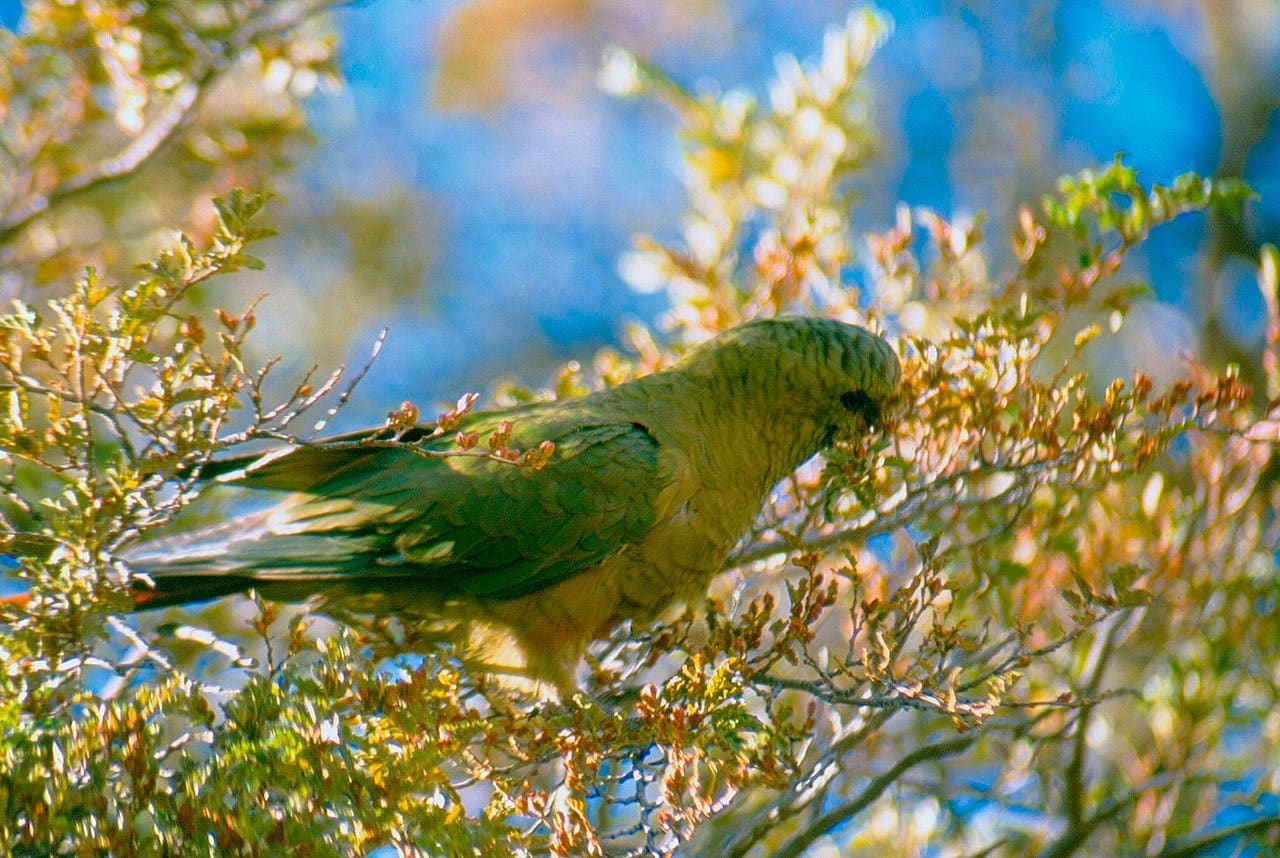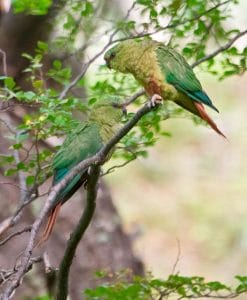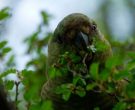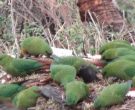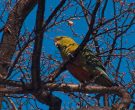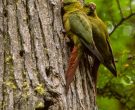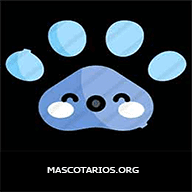Content |
|---|
Description:
28–36 cm. length.
The Austral Parakeet (Enicognathus ferrugineus), is mostly green; the lores and forecrown rather dull brick-red; the front of the crown with yellow and green feathers in the center, and edges dark green olive feathers central part of the crown.
The feathers of the upperparts They are olive green with darker edges, giving a scalloped effect. The upperwing-coverts They are olive color with dark margins. Flight feathers green with metallic blue suffusion. Underwing-coverts green with dark tips; bottom of the flight feather pale grey. The underparts They are mainly pale green olive, with darker margins (except in the the thighs) and a large opaque red spot on the central belly. In the long run tail It is dark red off above; pale grayish below. The upper jaw horn is dark colored with a black tip; the bottom is dark horn-colored; irises reddish brown; legs dark gray.
Both sexes are similar. The immature It has a duller red on the head and patch in the belly red less dense and less extensive.
- Sound of the Austral Parakeet.
Subspecies description:
-
Enicognathus ferrugineus ferrugineus
(Statius Müller, 1776) – Nominal.
-
Enicognathus ferrugineus minor
(Chapman, 1919) – Smaller and darker than the nominal, with a abdominal patch Red less extensive (sometimes absent).
Habitat:
Video – "Austral Parakeet" (Enicognathus ferrugineus) |
|---|
The Austral Parakeet occurs mainly in forests, including forests of Nothofagus, Araucaria and Quercus, but also in more open habitats with shrubs Berberis darwinii and Drimys winteri, also they visit cultivated areas, mainly at sea level in the southern part of the range, may reach 1200 meters and even 2.000 meters north. Observed in flocks of 10-15 individuals, coming to meet more than 100 birds outside the breeding period; flocks of 10 or more in Fire land with reports of attacks caused by Red-backed Hawk (Geranoaetus polyosoma).
In April and before the arrival of winter flocks leave the mountains to take refuge in lower valleys of lower altitude.
Reproduction:
They nest in the cavity of the trees, filling very deep holes with twigs and branches where building nests are no cavities available. The breeding season It comprising the months of November to December. Clutch 4-8 eggs. To the 26 days the chicks are born, emplumándose to 7-8 weeks.
Food:
predominantly eat seeds (can cause damage to grain crops). Its diet includes herbaceous and bamboo seeds, Drimys winteri, acorns and nuts Araucaria, fruit, berries and sprouts p. Nothofagus and bulbous roots.
Distribution and status:
Extending its range (reproduction / residents): 2.010.000 km2
Distributed by the south end of South America, psittacine distribution is the southernmost in the world.
They can be observed from Land of Fire north through Chile to province O’Higgins and east of Andes in Argentina, extending through Santa Cruz, Chubut, Black river Western and Neuquén Western.
Usually residents, even in the extreme south, although the foothills move to raise (at least in Land of Fire) with some predictable local movements in the north. generally common, It is very abundant in the wooded coast Land of Fire. Large areas remain intact habitat and inhabiting several large protected areas.
Very rare in captivity.
Subspecies distribution:
-
Enicognathus ferrugineus ferrugineus
(Statius Müller, 1776) – Nominal. Aisén at the southern end of Chile and South of Chubut at the southern end of Argentina until Land of Fire.
-
Enicognathus ferrugineus minor
(Chapman, 1919) – Aisén north to O’Higgins in Chile, and Chubut north to Neuquén in Argentina.
Conservation:
State of conservation ⓘ |
||
|---|---|---|
 Minor Concern ⓘ
(UICN)ⓘ
Minor Concern ⓘ
(UICN)ⓘ
| ||
• Current category of the Red List of the UICN: Least concern.
• Population trend: Stable.
• Population size : Unknown.
Justification of the Red List of the Category
This species has a very large range, and therefore does not approach the thresholds for Vulnerable under the range size criterion. The trend population seems to be stable, and therefore the species does not approach the thresholds for Vulnerable according to the population trend criterion. (> 30% decrease of more than ten years or three generations). The population size has not been quantified, but are not believed to approach the thresholds for Vulnerable based on population size criteria (<10.000 individuos maduros con una disminución continua estimada en> 10% in ten years or three generations, or in a particular population structure). For these reasons, the species is evaluated as Least concern.
Justification of the population
The world's population has not been quantified, but this species is described as ‘quite common‘ (Stotz et to the. (1996).
Justification trend
The population suspected to be stable in the absence of evidence of any reduction or substantial threats.
"Austral Parakeet" in captivity:
Very rare in captivity.
Chilean law prohibits the purchase, sale and possession of this magpie.
If you have a Austral Parakeet I recommend you give it to SAG or the Center for Rehabilitation of Wildlife of Codeff (rehabilita@codeff.cl, background: 777 25 34 – Santiago), because in that place you will come across many other parrots of the same species that suffered the same process, and specialized people who care very well, TO THEN RETURN THEM TO THEIR NATURAL HABITAT.
Alternative names:
– Austral Conure, Austral Parakeet, Emerald Conure, Emerald Parakeet, Magellan Conure, Magellan Parakeet (English).
– Conure émeraude, Conure magellanique, Perriche magellanique, Perruche magellanique (French).
– Smaragdsittich, Smaragd-Sittich (German).
– Periquito-austral (Portuguese).
– Cachaña, Cachaña austral, Cotorra Austral, Cotorra Cachaña (español).
scientific classification:
Formerly separated from the monospecific genus Microsittace.
– Order: Psittaciformes
– Family: Psittacidae
– Genus: Enicognathus
– Scientific name: Enicognathus ferrugineus
– Citation: (Statins Mulller, 1776)
– Protonimo: Psittacus ferrugineus
Images Austral Parakeet:
Sources:
– Avibase
– Parrots of the World – Forshaw Joseph M
– Parrots A Guide to the Parrots of the World – Tony Juniper & Mike Parr
– Birdlife
– Photos:
(1) – Austral Parakeet (also known as Austral Conure or Emerald Parakeet) in Torres del Paine National Park, Chile By Miguel Vieira [CC BY 2.0], via Wikimedia Commons
(2) – Two Austral Parakeets in Tierra del Fuego, Argentina By Francesco Veronesi [CC BY-SA 2.0], via Wikimedia Commons
(3) – Austral Parakeet (Enicognathus ferrugineus) seen near Laguna Onelli, Glaciers National Park, Santa Cruz, Argentina By Fabienkhan (Personal Picture) [CC BY-SA 2.5], via Wikimedia Commons – credit : Fabien Dany – www.fabiendany.com
(4) – Cachañas in San Martin de los Andes, Province of Neuquen, Argentina By Ignsal (Own work) [Public domain], via Wikimedia Commons
(5) – An Austral Parakeet in Magallanes Province, Chile By Paulo Fassina (Parrot EatingUploaded by Snowmanradio) [CC BY-SA 2.0], via Wikimedia Commons
(6) – Austral Parakeet – Torres del Paine National Park, Chile by Eleanor Briccetti – Flickr
– Sounds: Bobby Wilcox, XC236937. accessible www.xeno-canto.org/236937
